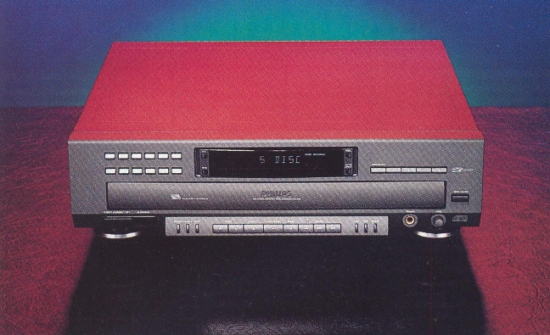Philips CDC-935 CD-changer
The Philips CDC-935 includes some features the others lack. For example, its Personal Presets system enables you to customize the player with your preferred modes of operation: Settings for such things as playback mode (continuous, random, programmed), pause time between tracks, and track-audition scan time can be stored. Personal presets remain active even when the player is turned off. An edit function enables the changer to automatically play a series of tracks that will fit onto a tape of a length you specify, either sequentially or in a programmed order; taping becomes a one-button operation when you connect the CDC-935 to a Philips recorder (such as a DCC deck) that supports the Philips ESI bus. And Philips's Favorite Track Selection (FTS) system can memorize a track sequence for a disc and automatically recall it whenever you play that disc.
Other perks include thirty-track program memory, audition scanning of the first 10 seconds (programmable up to 30 seconds) of each track, singledisc and all-disc random playback, single-disc and all-disc repeat, and autospace to insert a 4-second pause between tracks. Conveniently, one disc-platter position is labeled the Preferred Position. When you load that position and press the Quick Play button, the changer simply plays that disc, without searching the other disc locations: In other words, the CDC-935 operates as though it were a singledisc player. This is a great feature, though the "preferred" disc is not always accessible when the drawer is opened after playing-you may have to hit the load button to retrieve it. Three disc positions are accessible when the drawer is opened; the other two can be spun into position with the load button.
The CDC-935's back panel holds a coaxial digital output, fixed analog outputs, ESI bus connectors for the Philips multicomponent remote-control system, and an on/off switch for the infrared sensor. The styling of its plastic front panel matches other Philips components and is an interesting departure from the norm for audio equipment, though one that may not please everyone.
The CDC-935's disc tray was relatively, but it was moderately noisy when changing discs. I thought its owner's manual was unnecessarily confusing. It had the best dynamic-range measurement in the group but placed last in noise, distortion, low-level D/A linearity, interchannel phase error, and de-emphasis error, and it tied for last place in defect tracking.




